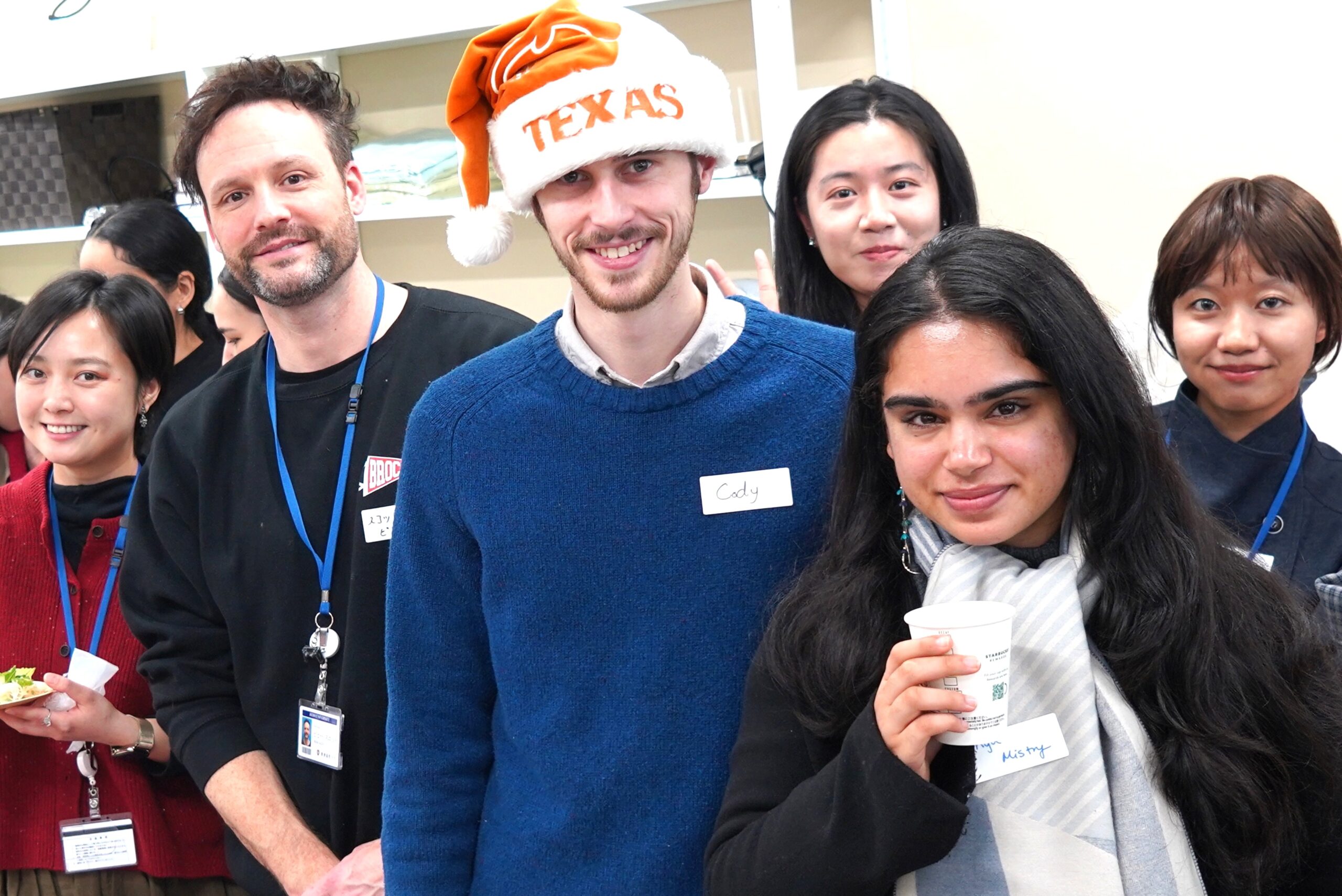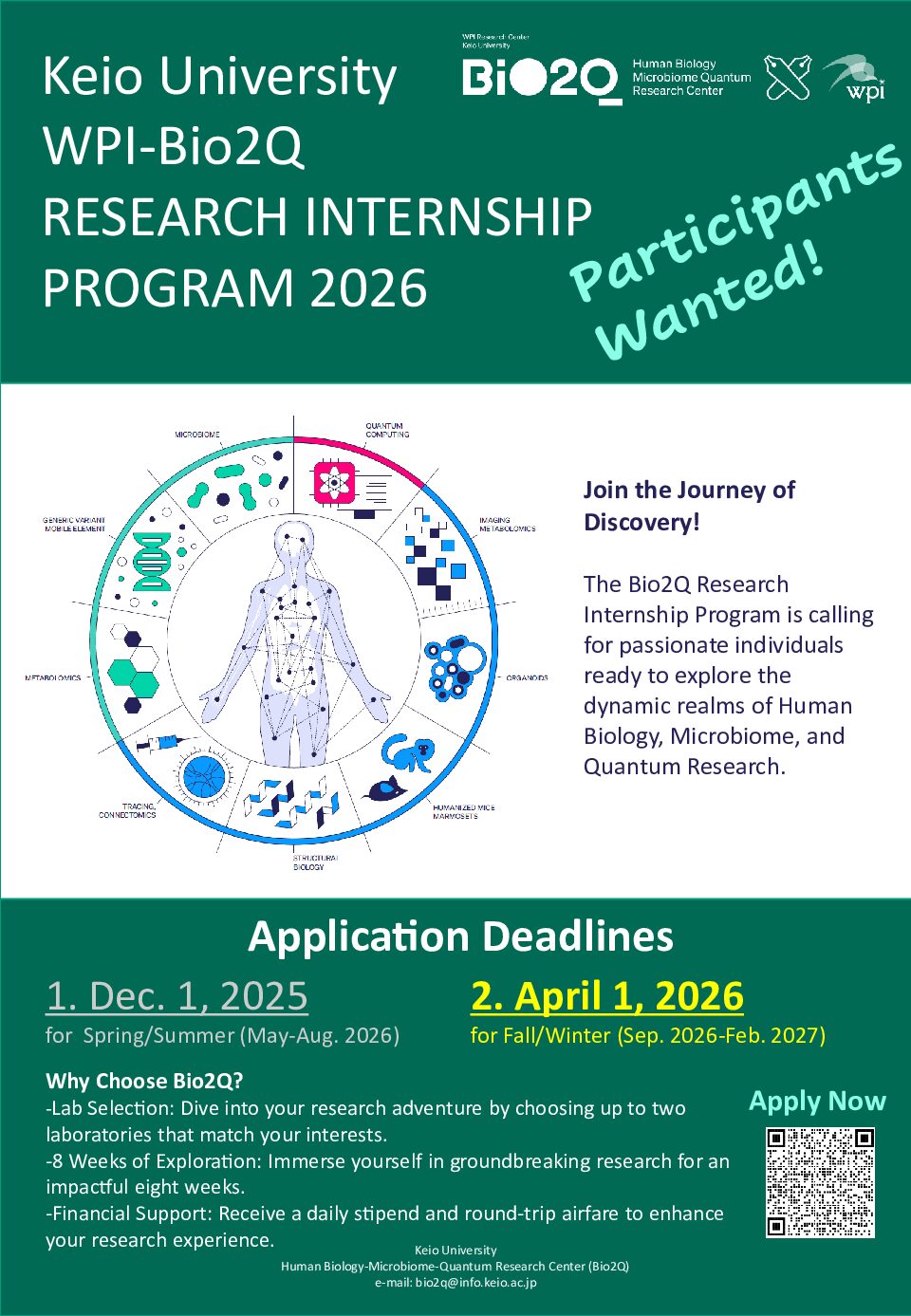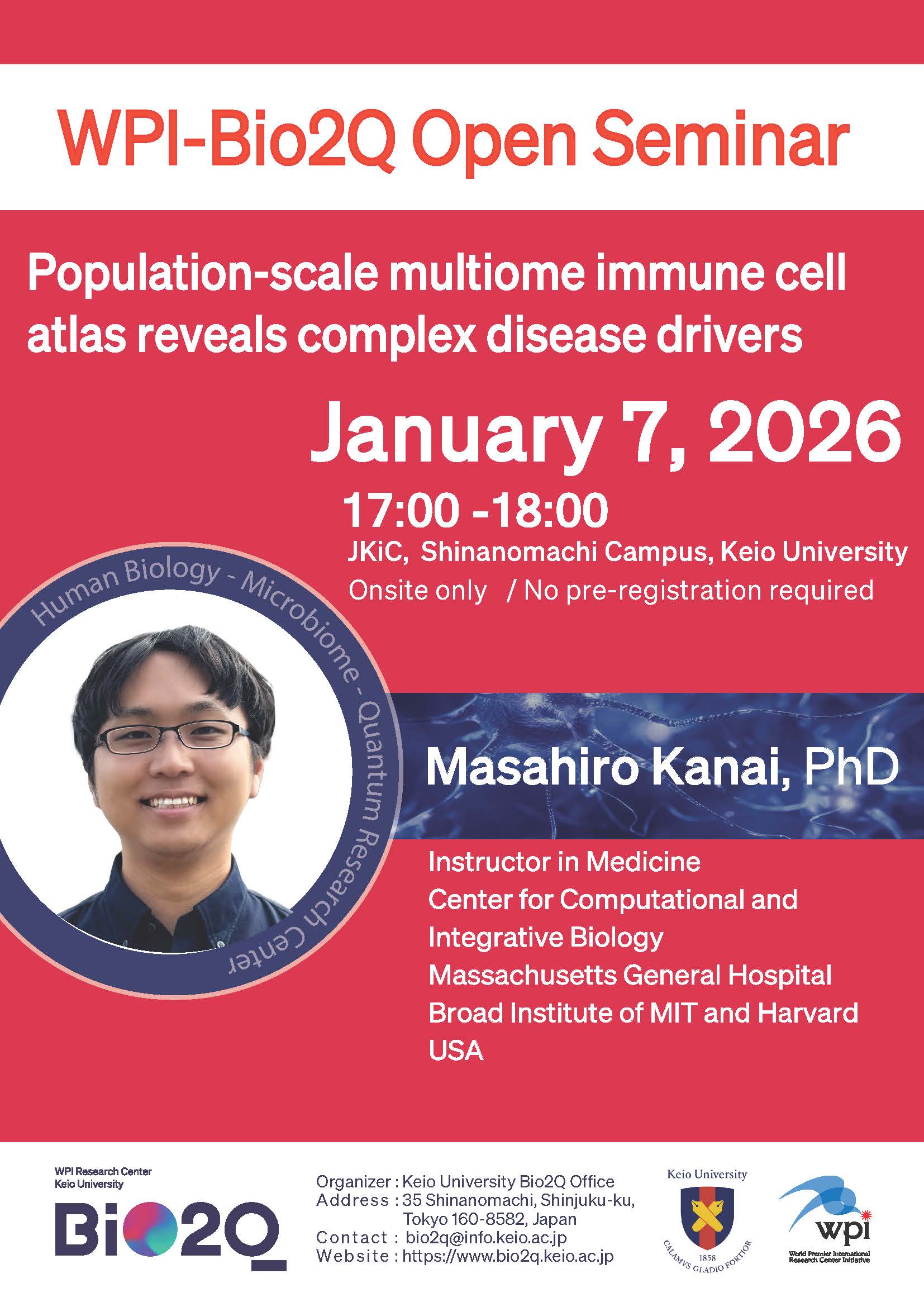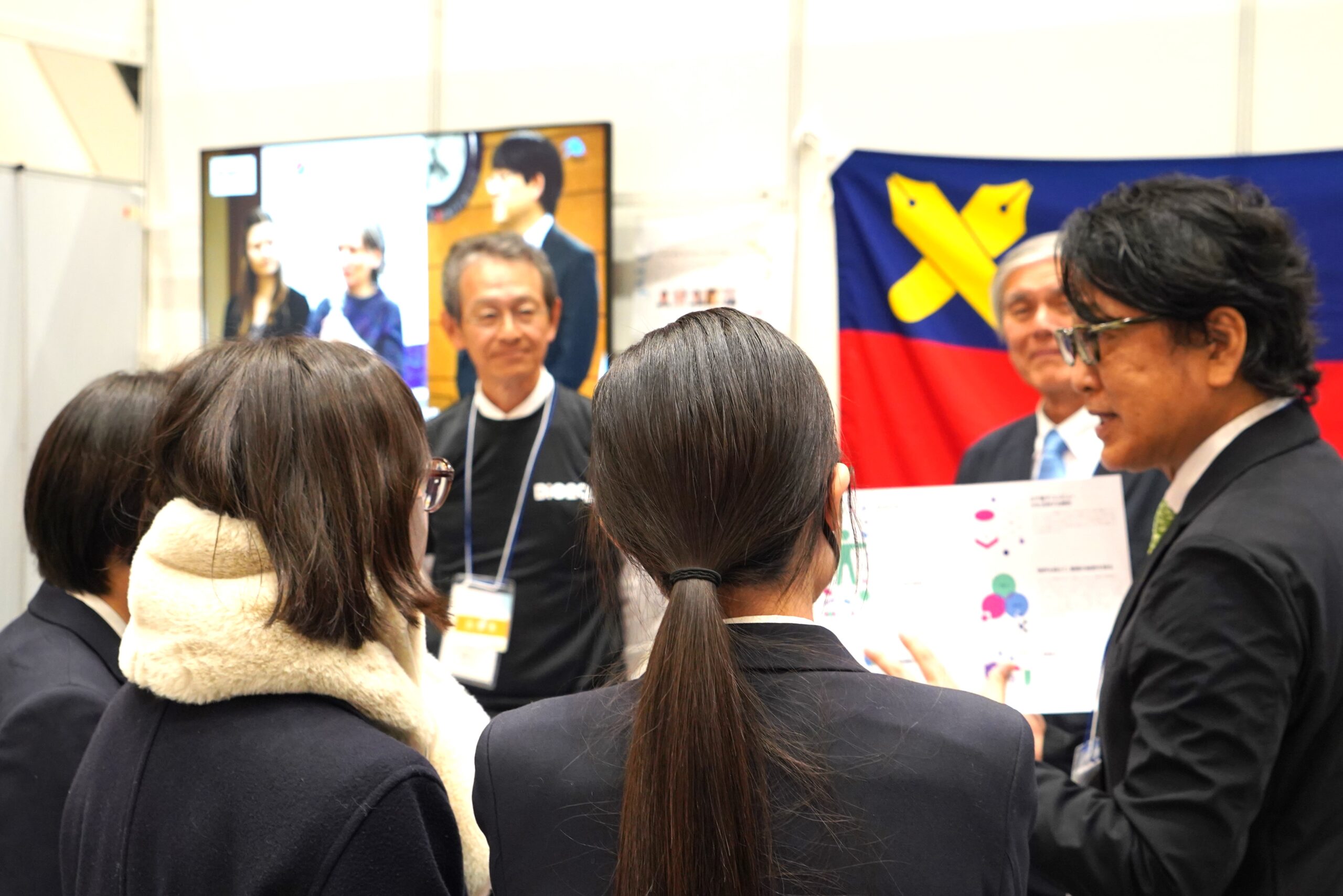イベント
【公開セミナー】Tsutomu Suzuki, Ph.D.
2024年9月11日
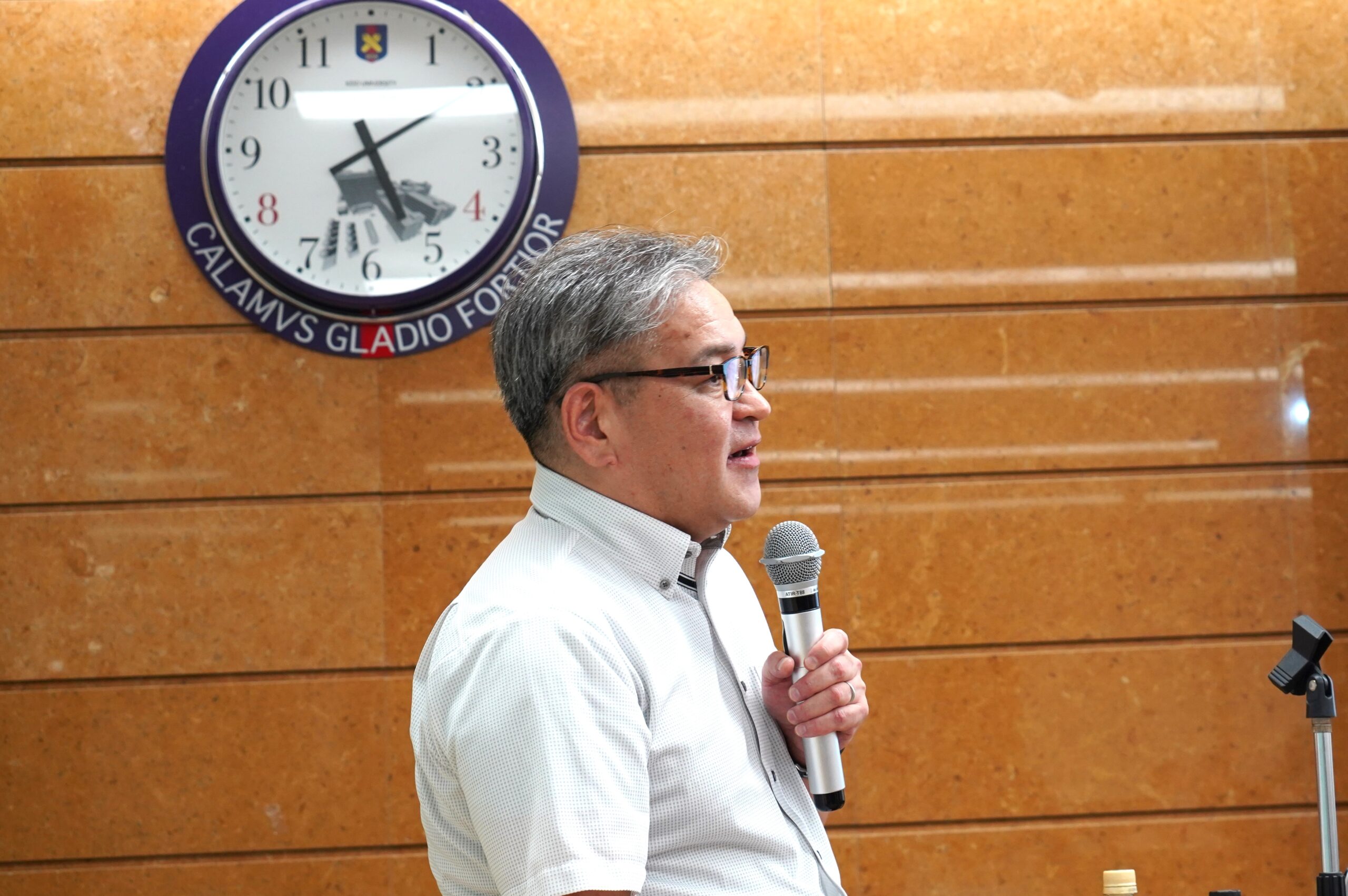
Tsutomu Suzuki, Ph.D.
Credits: WPI-Bio2Q
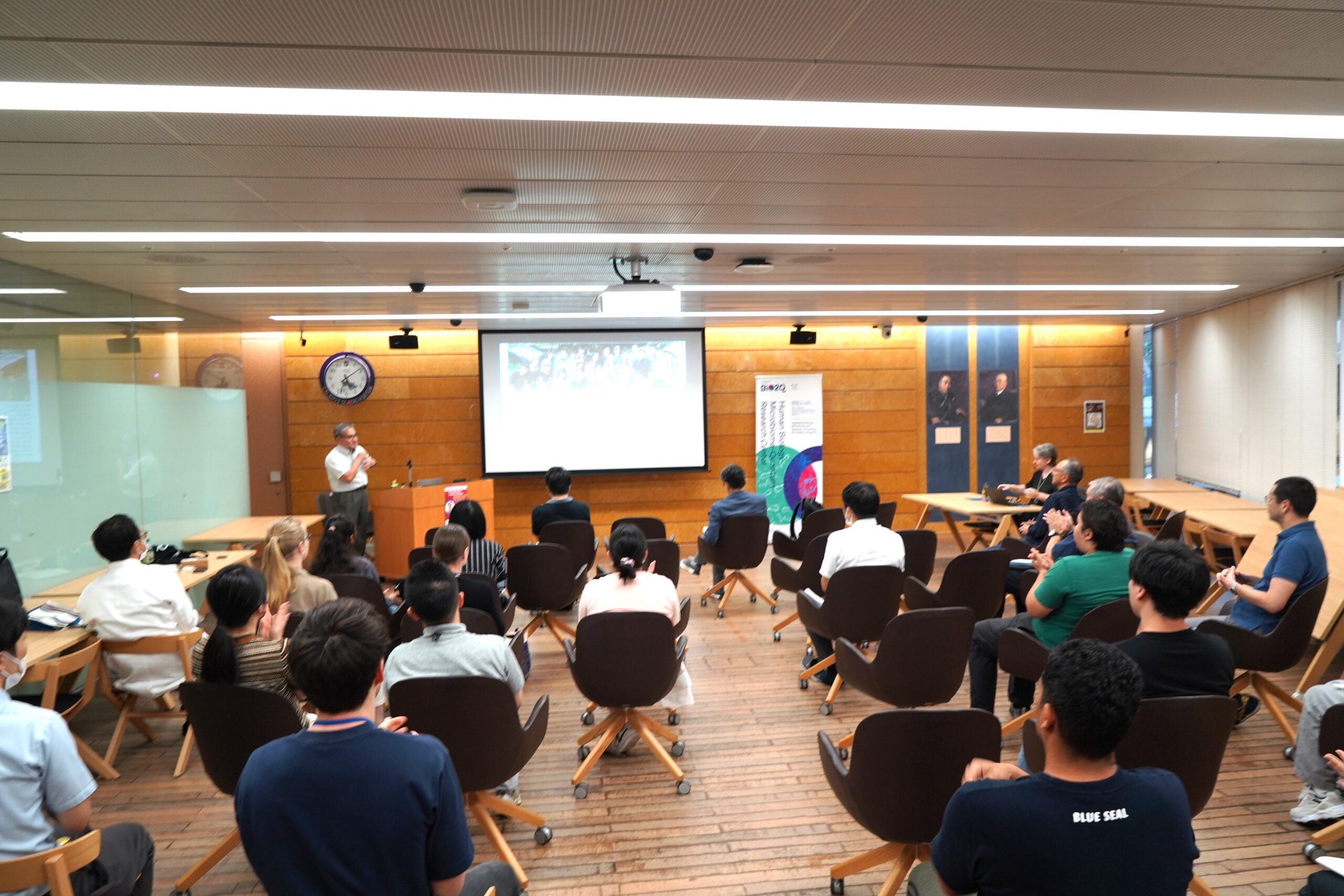
セミナーの様子
Credits: WPI-Bio2Q
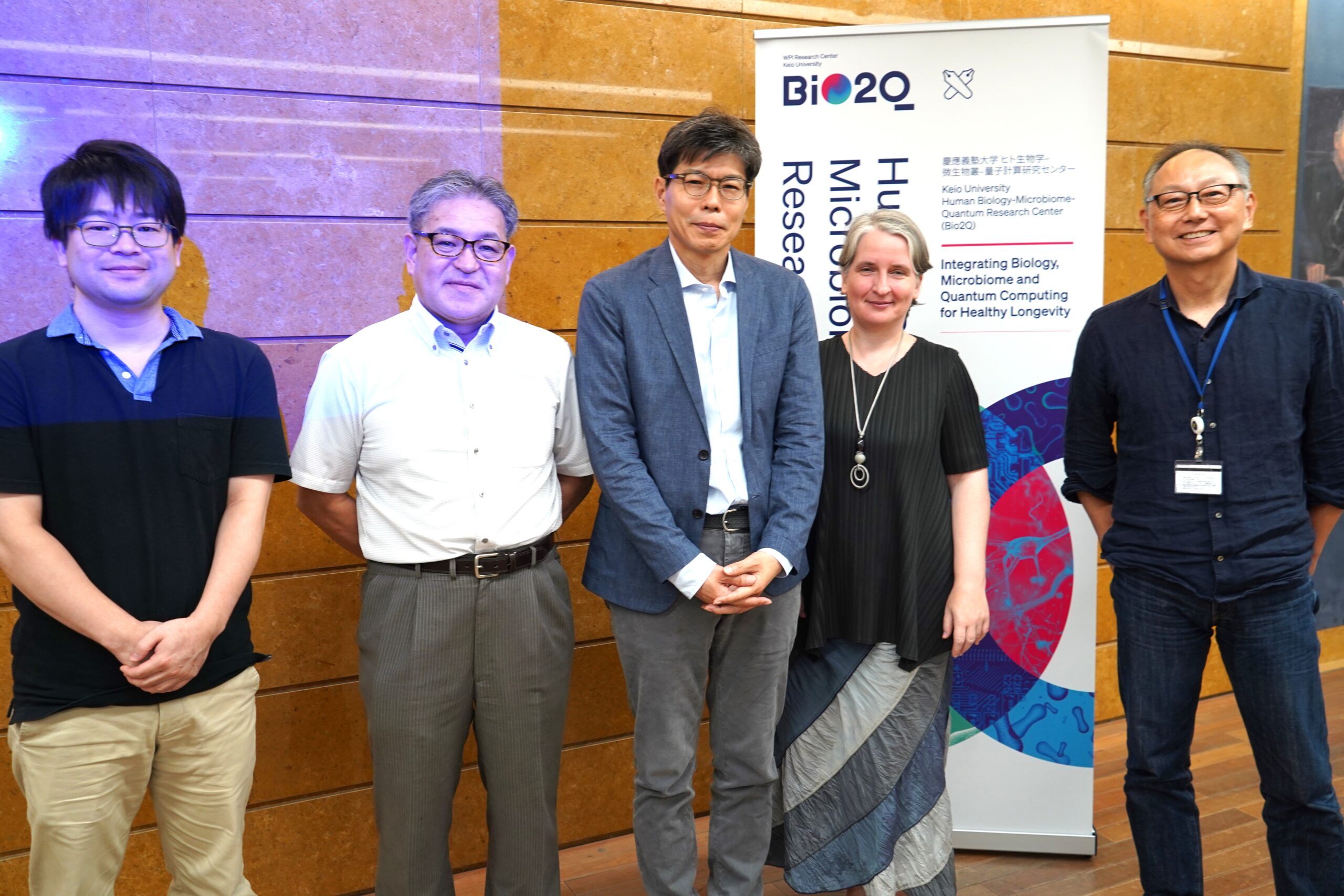
Credits: WPI-Bio2Q
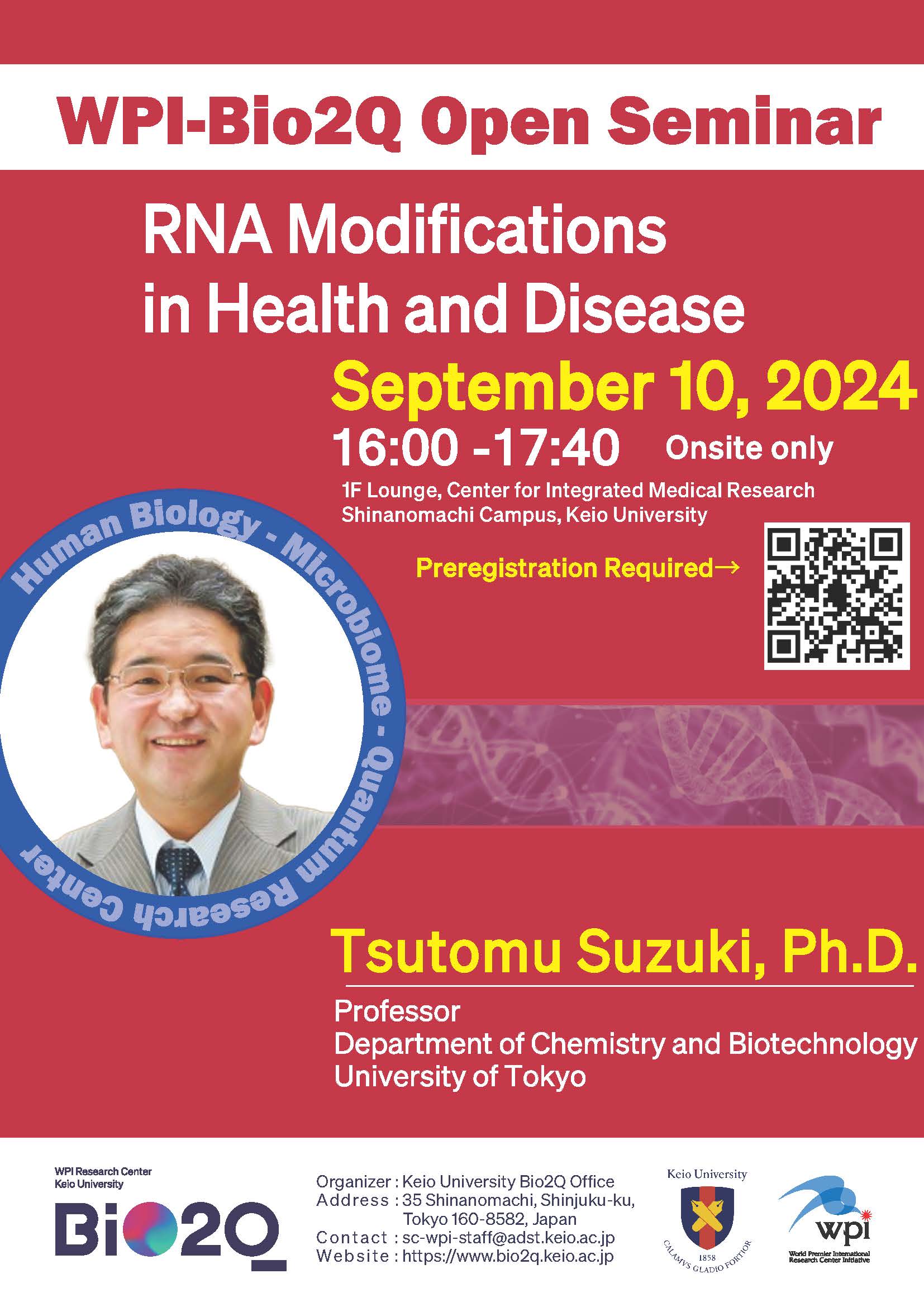
ポスター
Credits: WPI-Bio2Q
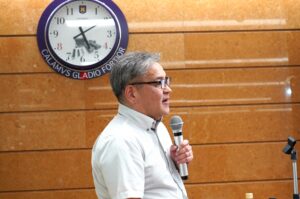
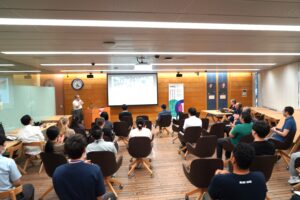
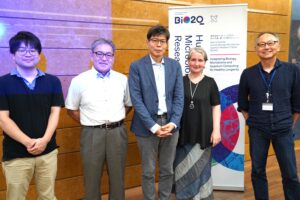
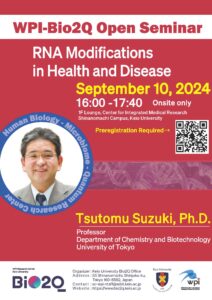




慶應義塾大学ヒト生物学-微生物叢-量子計算研究センター(WPI-Bio2Q)は、以下のとおり、公開セミナーを開催しました。
| 日時 | 2024年9月10日(火)16:00 -17:30 |
|---|---|
| 場所 | 慶應義塾大学信濃町キャンパス総合医科学研究棟1Fラウンジ(現地開催のみ) |
| 演題 | RNA Modifications in Health and Disease |
| 講演者 | Tsutomu Suzuki, Ph.D. Professor, Department of Chemistry and Biotechnology, University of Tokyo |
| 言語 | 英語 |
講演要旨
RNA molecules frequently undergo post-transcriptional modifications, which are essential for their proper function. To date, about 150 different types of chemical modifications have been identified in various RNA molecules across all domains of life. There are still a number of novel modifications to be discovered. RNA modifications appear to confer chemical diversities to simple RNA molecules basically composed of four letters, to acquire a greater variety of biological functions. These modifications play critical roles in stability and functions of RNA molecules. The physiological importance of RNA modification has been demonstrated by human diseases caused by aberrant RNA modification. We reported a severe reduction in the frequency of tRNA modifications in mitochondrial disease patients, like MELAS and MERRF. These findings provided the first evidence of RNA modification disorder. We have termed “RNA modopathy” as a new category of human diseases.
Queuosine (Q), a tRNA modification characterized by a 7-deazaguanosine with a bulky side chain, is widely present in both bacteria and eukaryotes. Unique to this modification, the free base of Q, known as queuine, is incorporated through a base replacement reaction, converting guanine (G) to Q. Eukaryotes, including humans, cannot synthesize queuine and must obtain it as a dietary nutrient from gut microbiota or dietary sources. In humans and other vertebrates, Q can be further modified by glycosylation, forming either galactosyl-queuosine (galQ) or mannosyl-queuosine (manQ). The function of these glycosylated Q modifications remained unclear for nearly half a century after their discovery. Recently, we identified two glycosyltransferases responsible for the formation of galQ and manQ and elucidated the biosynthesis, functional roles in protein synthesis, and physiological significance of these glycosylated Q tRNA modifications.
ニュースをさらに見る:
WPI-Bio2Q ソーシャルイベント(2025.12.19)
WPI-Bio2Qでは、慶應義塾大学信濃町キャンパスにて、ソーシャルイベントを開催しました。 日時:2025年12月19日(金)12:00-13:00 場所:慶應義塾大学 信濃町キャンパス 総合医科学研究棟 6N4(Bio2Q オープンラボ) WPI-Bio2Qのメ...
2026リサーチインターンシップ制度(第2期)
Bio2Qでは現在、リサーチインターンシップ生を募集しています。リサーチインターンシップは、慶應義塾大学大学院修士課程または博士課程への進学を希望し、WPI-Bio2Q関連分野の研究を行う学生を対象とした、「横断連携⼤学院プログラム(STaMP)」の一環として実施する、研究室イン...
【1/7 セミナー】WPI-Bio2Q Open Seminar: Masahiro Kanai, PhD
世界トップレベル研究拠点(WPI)慶應義塾大学ヒト生物学-微生物叢-量子計算研究センター(Bio2Q)は以下のとおり公開セミナーを開催いたします。 慶應義塾関係者の方であれば、どなたでもご参加いただけます。 日時 2026年1月7日 (水) 17:00~18...
【イベント参加報告】KEIO TECHNO-MALL 2025
世界トップレベル研究拠点(WPI)慶應義塾大学ヒト生物学-微生物叢-量子計算研究センター(Bio2Q)は、以下のとおりKEIO TECHNO-MALL 2025にて出展し、講演を行いました。 KEIO TECHNO-MALL 2025 日時: 2025年12月12日(金)...
【イベント】KEIO TECHNO-MALL 2025
世界トップレベル研究拠点(WPI)慶應義塾大学ヒト生物学-微生物叢-量子計算研究センター(Bio2Q)は以下のとおりKEIO TECHNO-MALL 2025にて出展し、講演を行います。 ぜひともご参加いただけますと幸いです。 KEIO TECHNO-MALL 2025 ...







